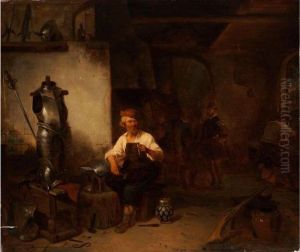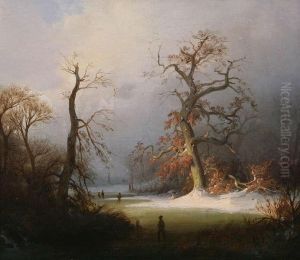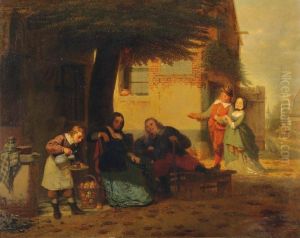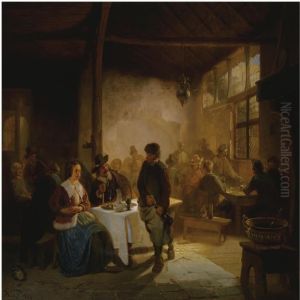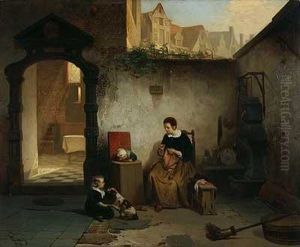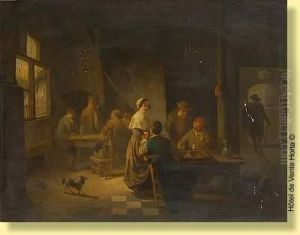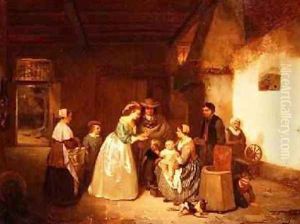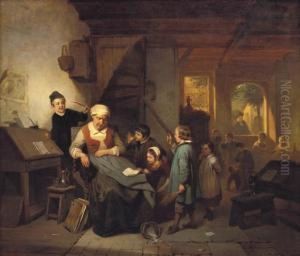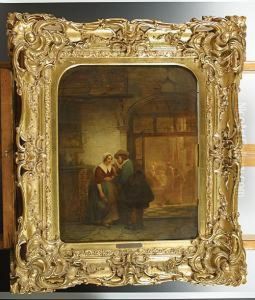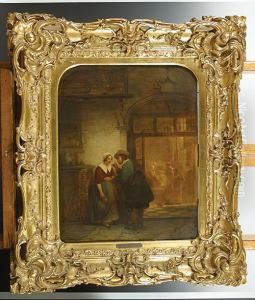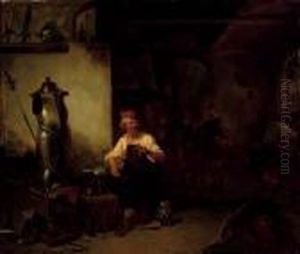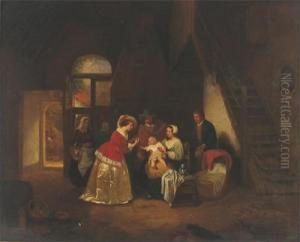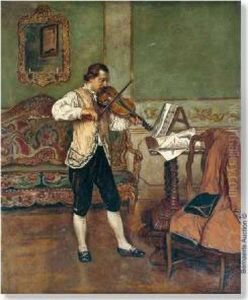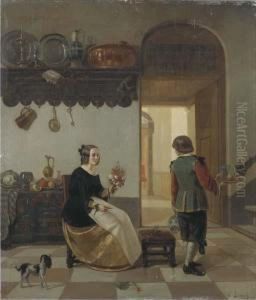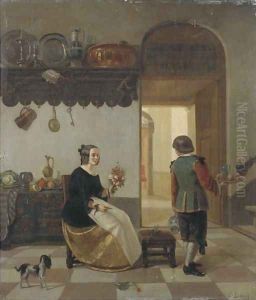Willem Linnig Paintings
Willem Linnig was a Belgian artist born in 1819 in Antwerp, a city renowned for its rich artistic heritage. Coming from a family with artistic roots, Linnig was predisposed to pursue a career in the arts. His father, also named Willem Linnig, was an engraver, which provided young Willem with an early exposure to the artistic world. This environment nurtured his talents, leading him to embark on a path that would see him become a notable figure in 19th-century Belgian art.
Linnig's early career was marked by his study under several prominent artists of the time. He honed his skills in painting and drawing, focusing primarily on landscapes and maritime scenes, which would become a recurring theme in his work. His style was influenced by the Romantic movement, emphasizing emotion and the sublime beauty of nature. Linnig's ability to capture the atmospheric qualities of light and the dynamic character of the sea earned him a reputation as a skilled landscape and marine painter.
Throughout his career, Willem Linnig participated in numerous exhibitions, showcasing his works alongside those of other distinguished Belgian artists. His paintings were well received, both in Belgium and abroad, contributing to his growing prominence in the art world. Linnig's dedication to his craft was evident in the meticulous detail and vibrant realism present in his works, traits that appealed to collectors and art enthusiasts alike.
In addition to his landscapes and seascapes, Linnig also explored historical and genre painting, demonstrating versatility across different artistic genres. His historical paintings often depicted scenes from Belgian and European history, imbued with a sense of drama and narrative depth. Through these works, Linnig contributed to the nationalistic and historical revival that characterized much of Belgian art during the 19th century.
Willem Linnig's contribution to Belgian art was not limited to his own creations. He was also a mentor to younger artists, including his nephew Willem Linnig the Younger, who would go on to become an accomplished painter in his own right. Linnig's legacy is reflected in the continued appreciation of his work and his influence on subsequent generations of artists.
Willem Linnig passed away in 1885, leaving behind a body of work that continues to be celebrated for its beauty and artistic merit. His paintings remain a testament to the skill and passion of one of Belgium's finest 19th-century artists, capturing the essence of the natural and historical world with elegance and precision.

